From the cave site of Goa Gajah, your driver takes you a little further into the jungles of central Bali. Climbing and descending through lush forest, the road is as rugged as the verdant jungle’s floor. Stopping at a rustic looking sign, he encourages you to walk down a narrow cleared path through the vegetation. The path is paved in places, although the roots of the trees have pushed up man’s obstacles to nature. After walking for a few minutes, the forest clears to paddy fields and coconut palms. Interspersed with banana trees, the landscape becomes that of a rural idyll. It is as if you have walked into a painting from the 19th century. The bright green of the growing rice is like a sea and as the breeze blows between the palms, it ululates gently. Walking along the path you spot a few leeches here and there and take pains to avoid the embrace of their small, but efficient maws. A sign shows you that you are walking in the right direction and your track takes a small downward trajectory, bringing you to a rocky corridor. To your left, a niche has been cut out of the rock. Water is spurting into what looks like a rustic basin. A stout pot-bellied figure that appears almost simian has been carved into the rear wall of the hollow. This is the beginning of your short, but fascinating journey through the rock carvings of Yeh Pulu in the Balinese archaeological heartland of The Land Between the Rivers.
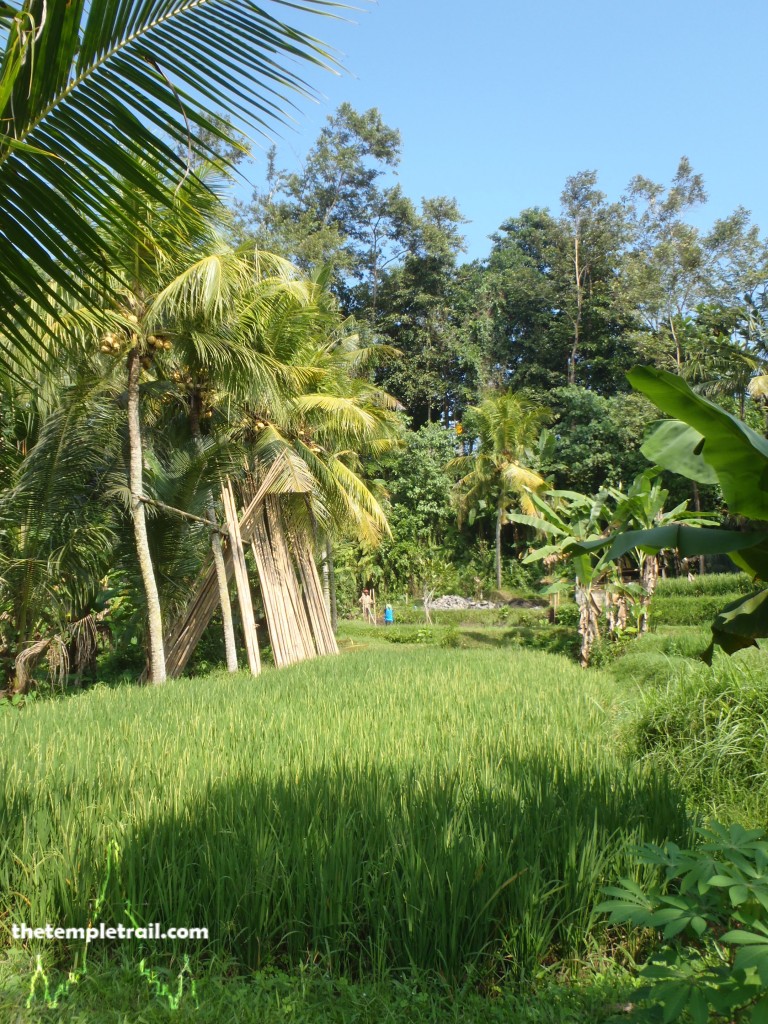
‘Discovered’ by the Punggawa Ubud (retainer of nearby Ubud) in the 1920s, Yeh Pulu, was carved in the 14th century. The ravine that runs between the Petanu and Pakerisan Rivers was overgrown and covered by volcanic debris, but was still a site for locals to make offerings before the Punggawa Ubud began clearing it. Local boys approached the Dutch painterNieuwenkamp when he was at Goa Gajah in 1925 and told him of ‘a rock with many large wayang figures’. He was then led by them across the paddies to the site. He then informed the Dutch authorities and the site was more extensively excavated and examined in 1929 by Dr. W. F. Sutterheim of theDutch Colonial Archaeological Bureau. In 1949 it finally had a stone gutter installed to protect the surface of the carvings from water running off the paddy fields above, revealing yet more of the relief. Despite the work done to preserve the site and the promotion of it by the Dutch and then the Indonesians, Yeh Pulu has remained moderately visitor free. Compared with nearby Goa Gajah, the 25 metre long relief and hermitage is peaceful and lonely. Its name is comes from the word Yeh, meaning water or spring and Pulu, a stone rice or water container. This is a reference to the container that rests in the holy spring on the site. The relationship of rice to water is undoubtable and as you enter into the site through the rice paddies, it is plain to see.
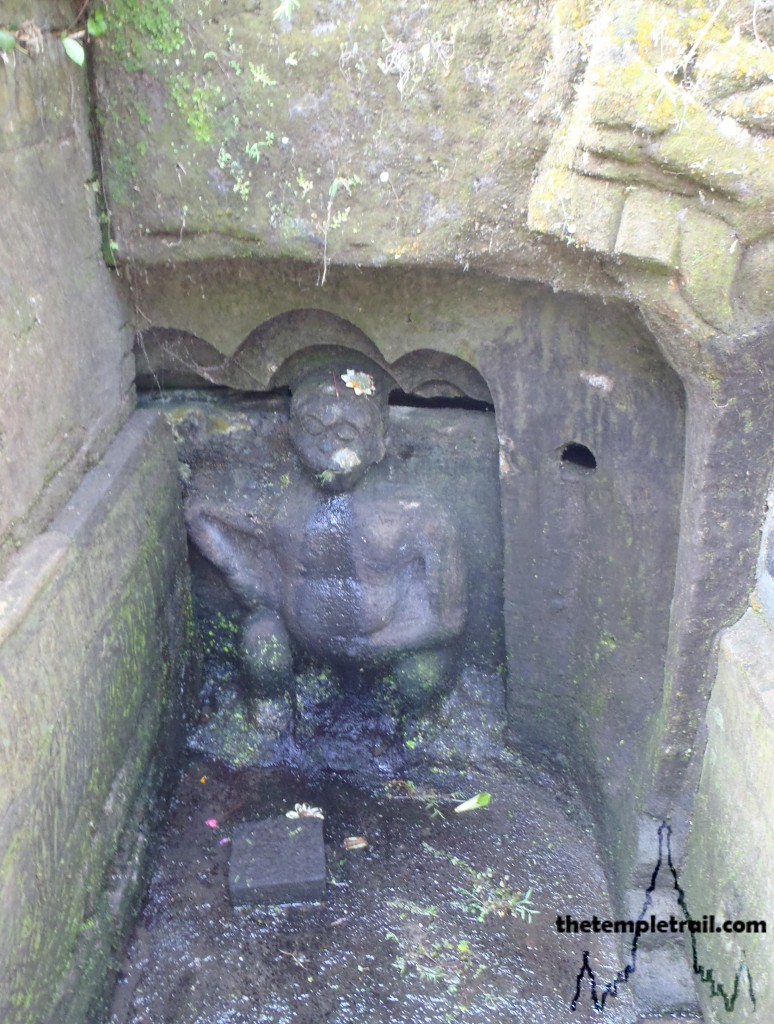
Passing a few more recesses for ritual cleansing, you come into the site proper. On your right is a low stone wall that contains earth and trees, but to your left is a glorious piece of ancient Balinese rock carving. Before you is a two metre high relief that stretches along the surface of the natural rock. The frieze is seen as being far more natural and lively than any other example of rock art on the island and although there is no verifiable story, it shows traditional scenes of daily life. Local legend has it that the giant Kebo Iwa carved it with his fingernail (just like at Goa Gajah). The legend of the giant and his various exploits dates from the time of the Majapahit Empire (1293 – 1527 AD), making it contemporary with Yeh Pulu. During the expansionist regency of QueenTribhuwana Wijayatunggadewi the Majapahit invaders from Java colonized Bali and in 1343 fought a war against the king of the local Kingdom of Pejeng, based in the nearby village of Bedulu (Bedahulu). King Dalem Bedahulu is said to have meditated at the hermitage (ceruk-ceruk – recesses) at Yeh Pulu before his ultimate defeat and the fall of the kingdom to the famed Gajah Mada (Elephant General) of Majapahit.
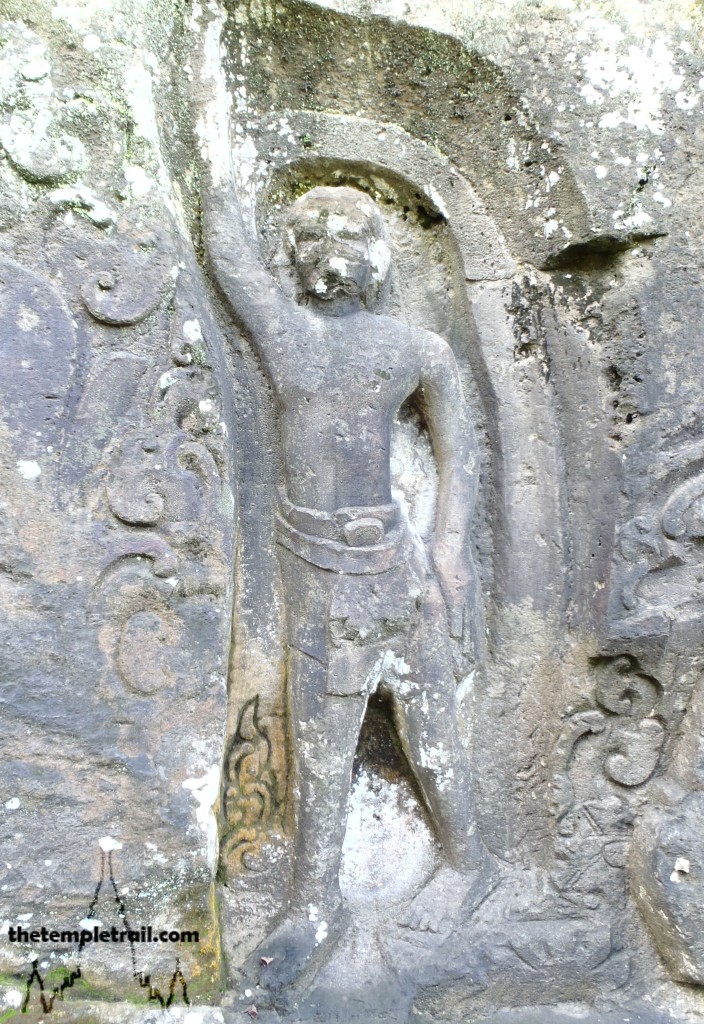
A carving of a standing youth heralds you with an upraised arm as you start to take in the scenes of the forest and daily life in the ancient Kingdom. It has been put forward that the scenes may have been carved in the 16th century, influenced by wayang puppet shows, but this seems a little late. The possibility of the work being styled on the 14th century carvings at the Majapahit temple of Candi Penataran in East Java is possible, but these look radically different. The more stylized and detailed carvings at Candi Penataran do not have the artistic flair of natural rustic feel of these at Yeh Pulu. Although some of the scrolling decoration you see is similar, the local artist (it is believed to be the work of a single artist) did not employ the angular style on the figures and brought their own flair into play. The work has a primitive crude feel to it, but somehow is more emotive than other work around Java and Bali.
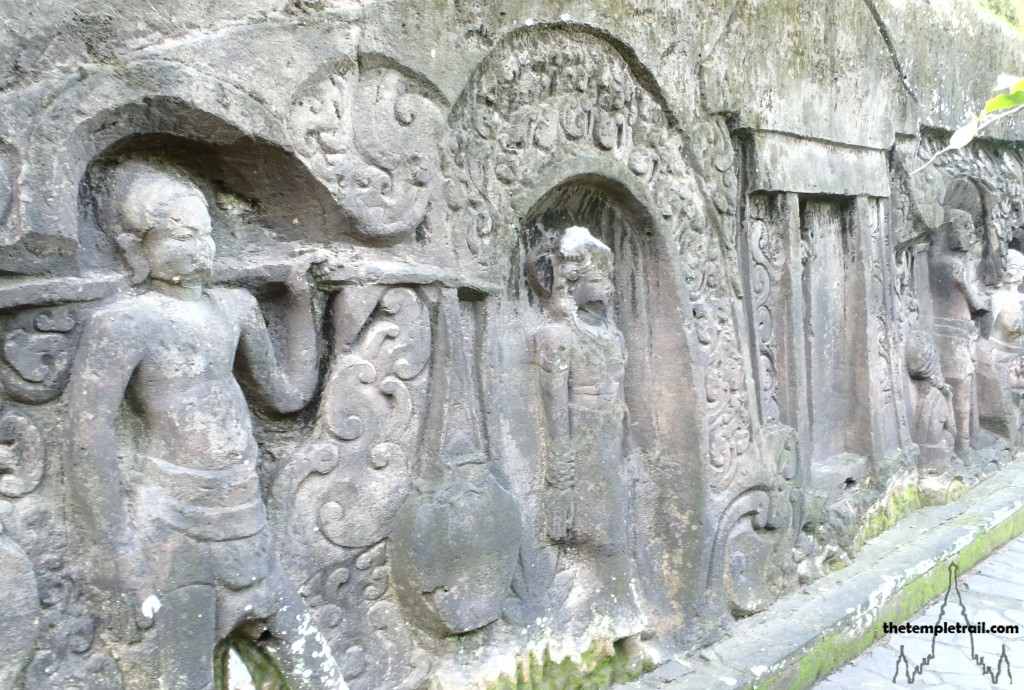
The first of five scenes is before your eyes. The episode depicts a man carrying a pair of guci (jars) on a pole across his shoulders. This daily scene can be witnessed all over Southeast Asia even today. The jars in the image could contain water or perhaps tuak (palm wine). Next to him stands a female figure with a richly adorned head and jewelry on her arms, suggesting a high status, perhaps that of a priestess. The figures are swathed in intricate and nature inspired scrollwork. The female figure in particular is framed by an elaborate mandala-like border. Walking along the frieze, you next see a doorway of perhaps a temple or palace with another female figure looking out of the half opened doorway. This commonplace image, feels very realistic and it is as though you have been offered a window into the past.
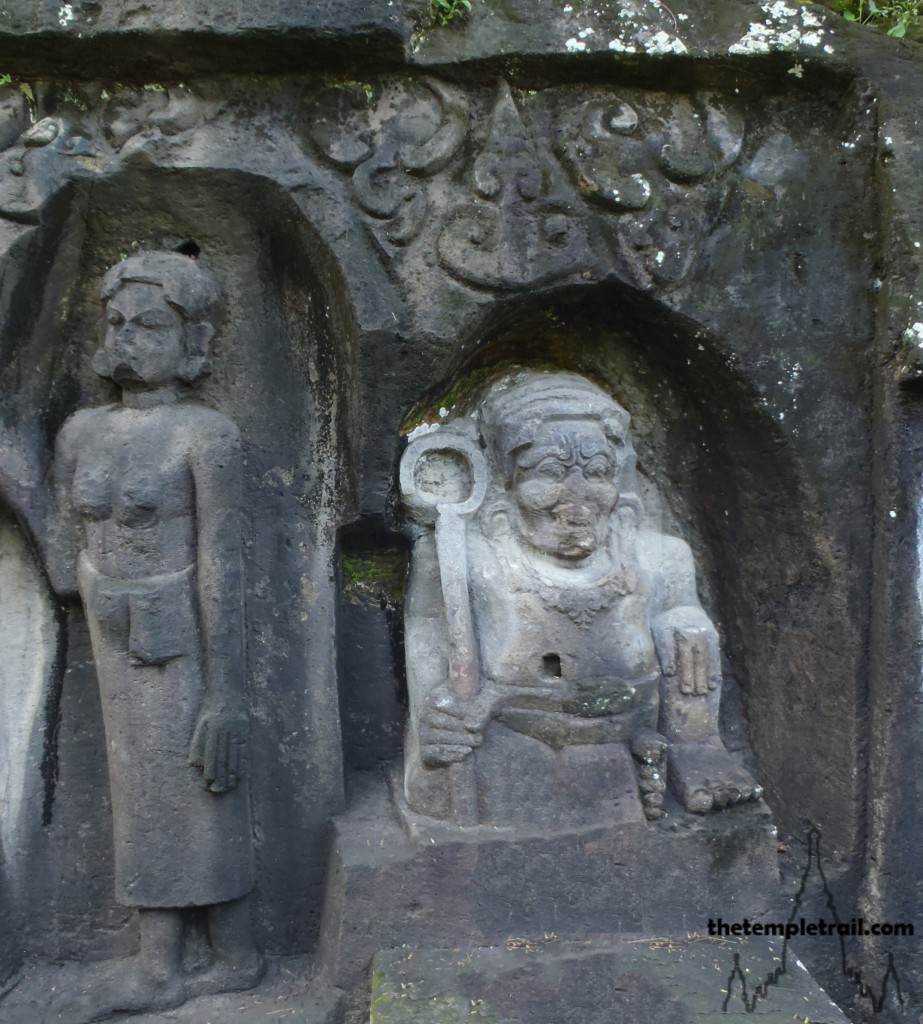
The second tableau begins with a squatting, turbaned ascetic. This holy man is looking outward with his chin resting on his hands in a natural pose. The turban is a precursor to the current day Balinese priests’ headdress. After him, there stands a man with an axe over his shoulder. This heroic figure is one of the heroes that the frieze is also interpreted to depict. It is said that the figures are emerging to search for adventures. The axe wielder stands before a kneeling maiden who rests on a seat. Below her, three monkeys play. Another maiden stands next to her, but it is the squat dwarf-like figure that really draws your attention. This figure does not appear to be a normal human and has the remnants of the prominent teeth seen in temple sculptures. In front of the carving is a rudimentary altar and a rock in the path that has been decorated. The altar would suggest that this is a deity; perhaps a dwarapala (guardian) or a local god. The figure is holding a staff with a circle at the end of it. Viṣṇu (Vishnu) wields the chakra (a circular bladed weapon) and his eighth avatar, Kṛṣṇa (Krishna), is also known as Chakradhaari; the Chakram-wielder or Circle-man.
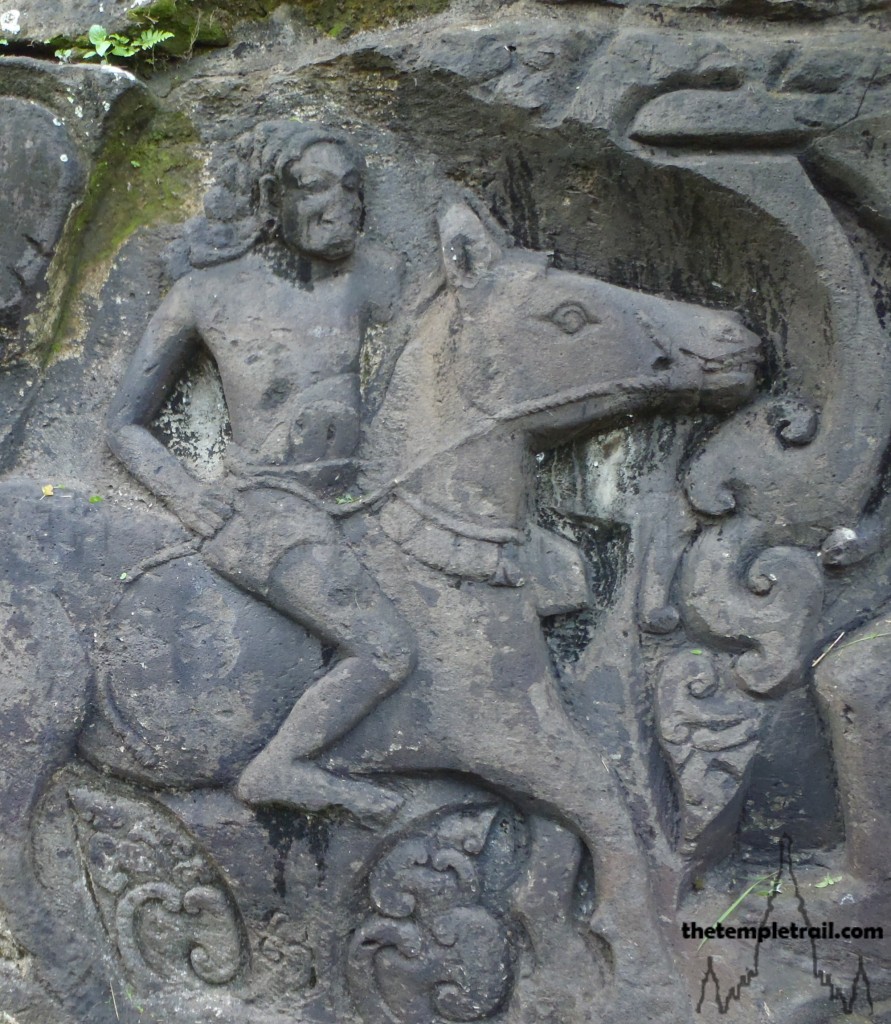
The idea that the whole set of tableaux are in fact tales of Kṛṣṇa has been most strongly advocated by Bernet Kempers in his 1977 volume, Monumental Bali. Many believe that the standing figure at the beginning of the frieze, who saluted you as you arrived, is Kṛṣṇa. It may represent the youthful god lifting Mount Govardhan, as the pose with the raised right hand symbolizes this in traditional depictions. Kṛṣṇa convinced the people not to give puja (prayers) to the rain god Indra for a good crop. Indra, in his anger, sent the rains to flood the land. To protect the people, Kṛṣṇa raised Govardhan as an umbrella and held it in his upstretched hand. Indra conceded defeat and recognized Kṛṣṇa as supreme.
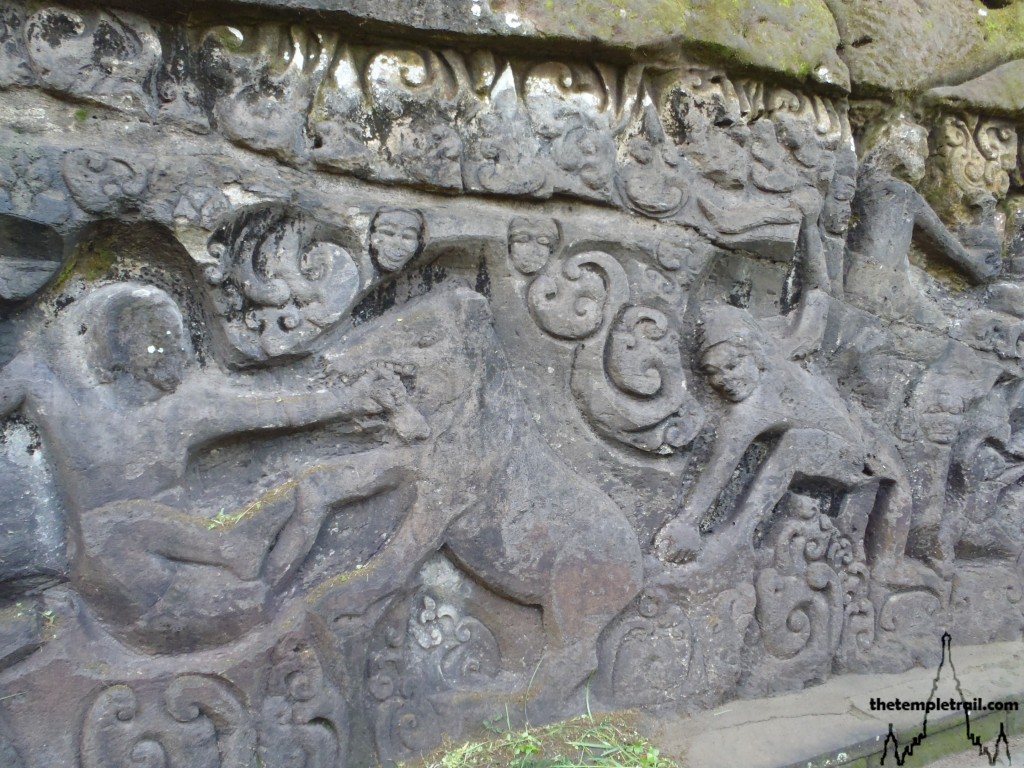
The next scene you come to after the squat figure is a hunting scene. It depicts the hunting of either a boar or a bear. A man on horseback oversees the hunt as the one in front throws a spear at the beast. The man in front is being gored by the animal while another is attacking it from behind with a blade. The scene is full of dynamic action and the heroic figures are locked in mortal struggle with the powerful creature. That it is a boar, would be more normal for Bali, as they live naturally in the jungles. The scene depicts a part of everyday ancient life. Having eaten the famous babi guling (roast suckling pig) in Ubud just the night before, you know that roast pork still holds a special appeal to the islanders. Advocates for the Kṛṣṇa story say that it is a bear and that the scene shows the god defeating Jambavanta, the King of the Bears. In the epic Mahābhārata, Kṛṣṇa is accused of stealing the magical Syamantaka jewel. He tracks the jewel to Jambavanta, who has acquired it through killing a lion that killed its original holder Prasena. After defeating the Bear King in his cave, Kṛṣṇa gets the gem and the daughter of Jambavanta as one of his wives.
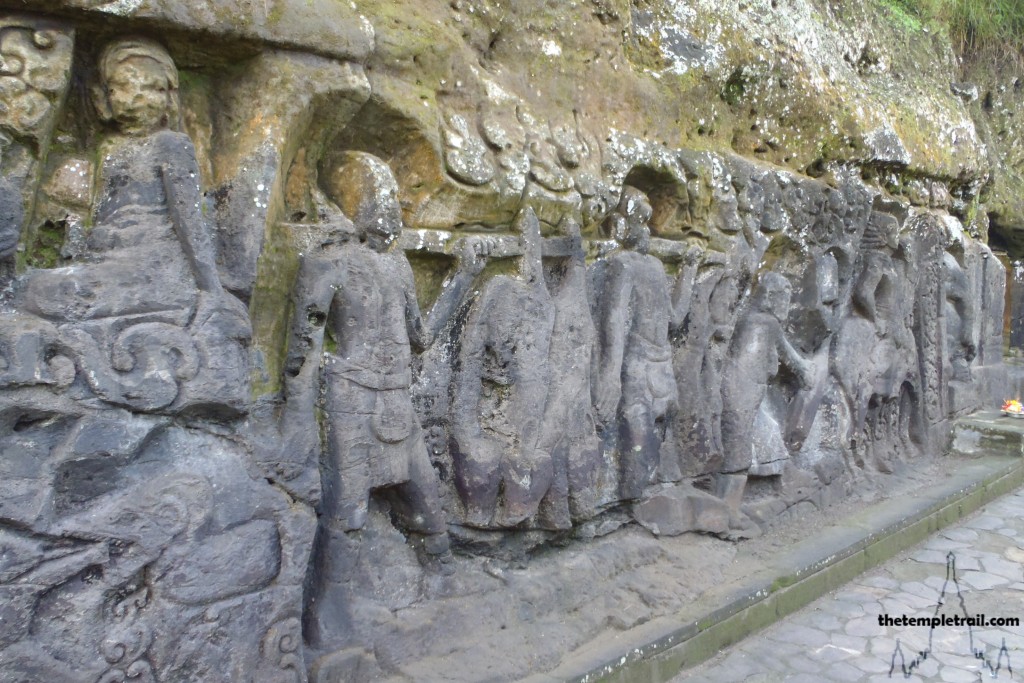
Some background figures fill the space before the fourth scene. Here, two men walk with a pole full of animal carcasses. The animals are likely the result of a hunt and appear to be boars (or perhaps bears). This is a normal scene of typical life on Bali. Next is the final episode. A woman is holding on to the tail of a horse as a man rides it. The man on the horse has a noble disposition and the bizarre scene seems to have no obvious meaning. Perhaps it tells a local folk tale. The woman holding the tail has no apparent reason for doing so. The fact that this is the second horse depicted in the relief indicated the significance of horses in ancient Bali. Whether a normal conveyance or a sign of status, they were obviously held in regard.
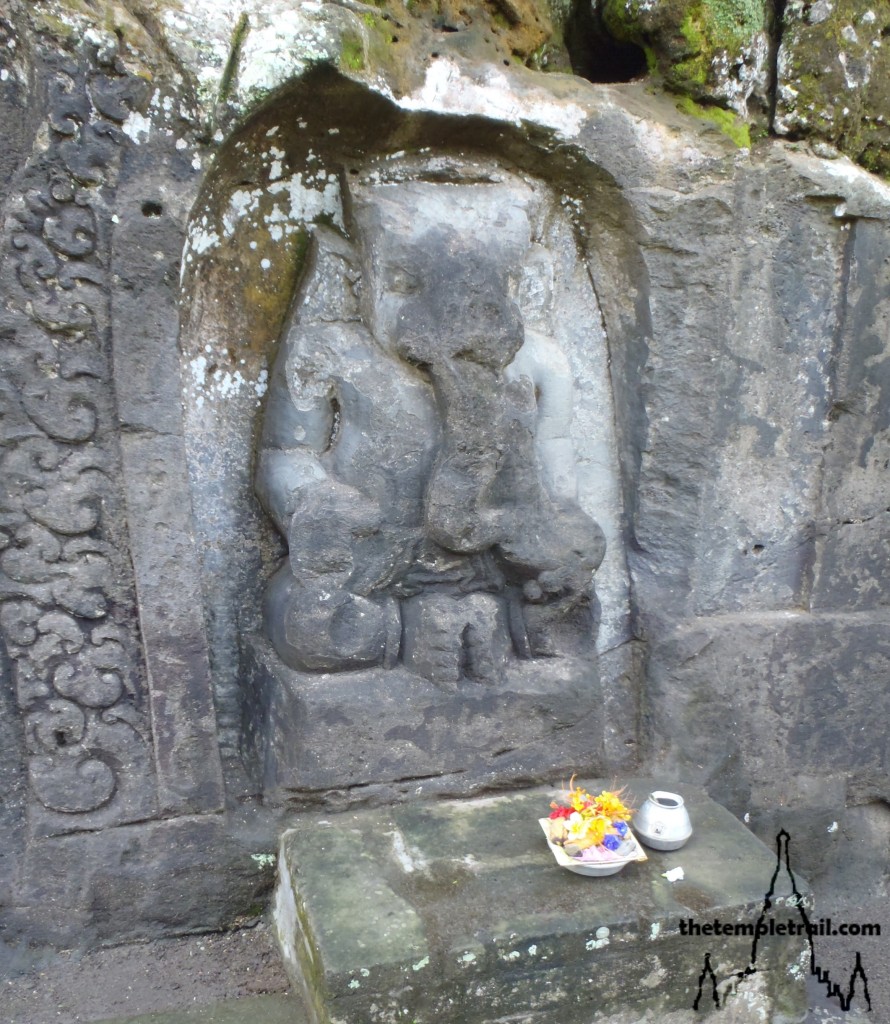
At the end of your journey, at the southern terminus of the frieze, you are greeted by a caretaker. The elderly couple busily clean the site and the tiny lady directs you towards the carving of Gaṇeśa (Ganesha). The elephant-headed god is popular throughout the Hindu world and is a clearer of obstacles. Here he is simply portrayed with two arms. And his feet together. With the help of the old lady, you make an offering of flowers to the god. The presence of this statue leads to an intriguing connection with nearby Goa Gajah, where there is also a statue of the god. The lady sprinkles some of the tirta (holy spring water) on you and places a frangipani flower in your hair. The water is from the holy spring that the site is named after. Opposite the statue of Gaṇeśa, a wall separates the water from the walkway. A small set of steps leads into it and from here, you can see the stone pot in the shallow water. After thanking her and leaving a donation for the upkeep, you inspect the hermitage at the end of the relief.
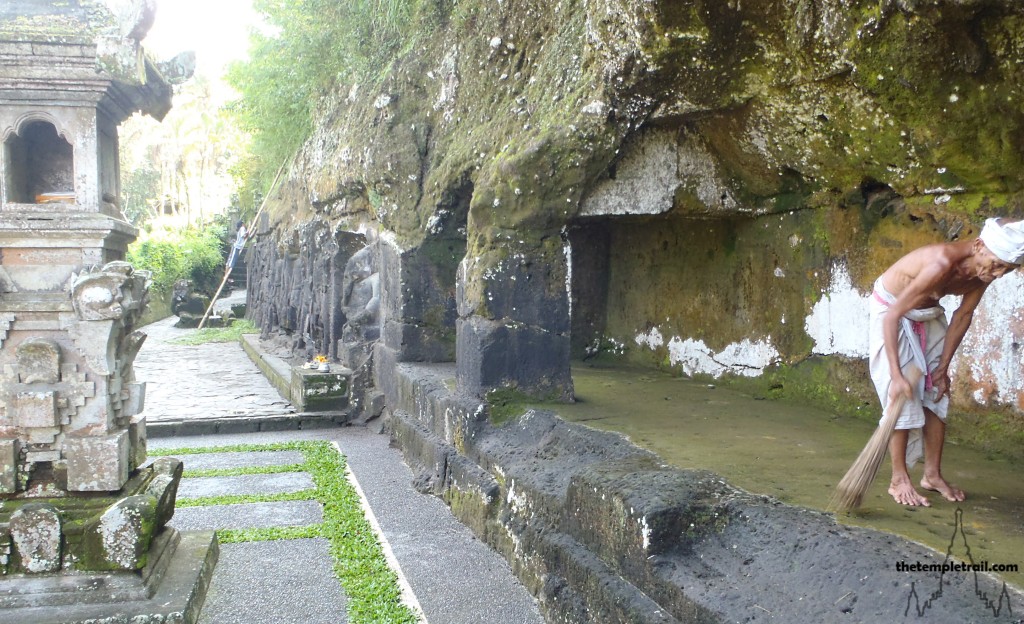
This area, marked by three small tower shrines, is a little wider than the rest of Yeh Pulu. The rock on your left has a large recess. It is Two metres deep and seven long. It is not tall enough to stand up straight in, apart from where the roof has collapsed. This is where the ascetic for the spring would have lived in ancient times. He would have looked after the carvings and site and helped pilgrims make offerings, much as the current caretakers do today. He would also have spent many hours meditating and performing rituals to the local gods and spirits. The magical nature of the site surrounds you as you head back north along the frieze and back out to the jungle path. Everything converges at Yeh Pulu. Nature, agriculture, history, magic, gods and men. Whether it depicts religious scenes or secular ones, the site holds a spell over you as you find your way back to your car.
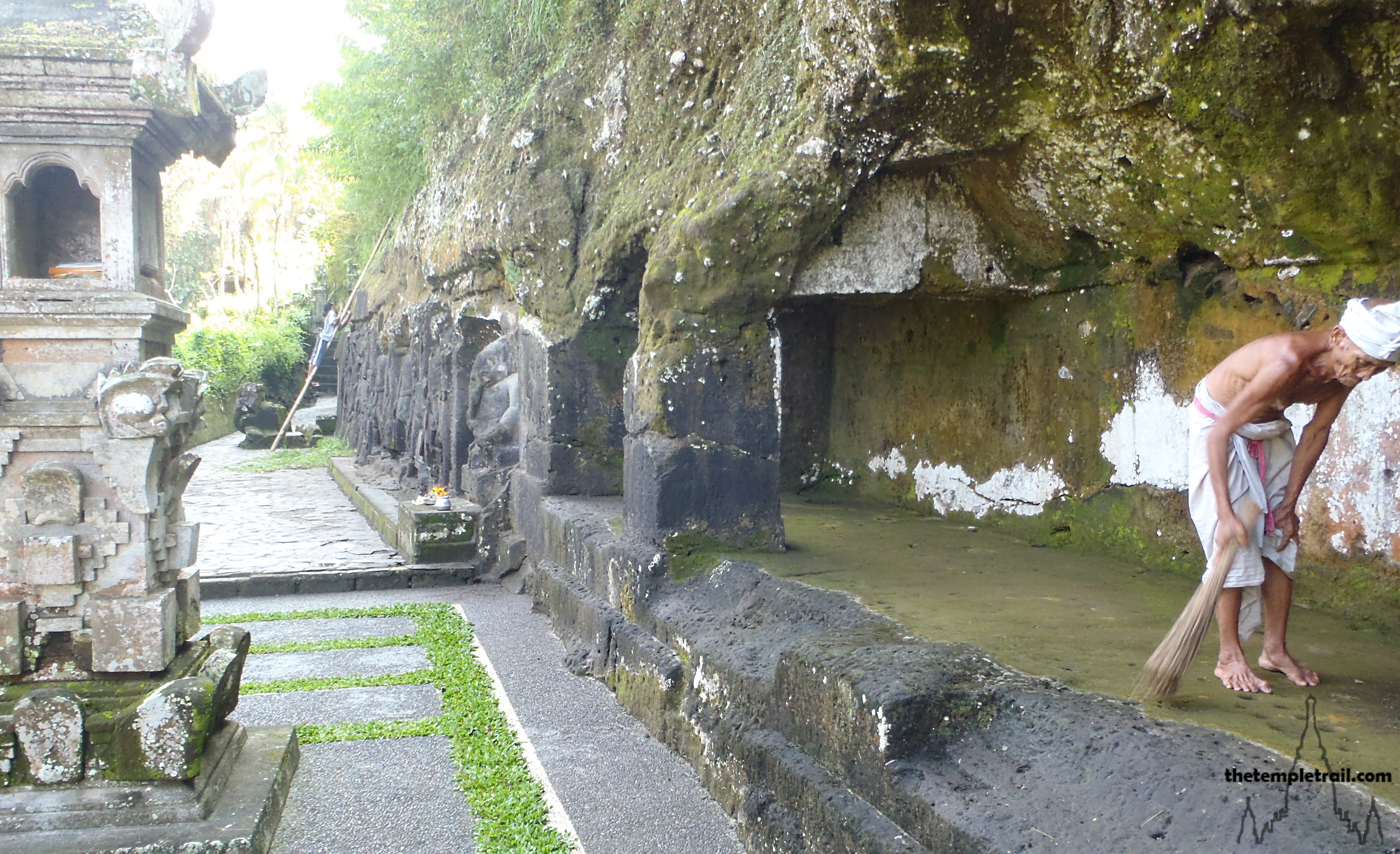
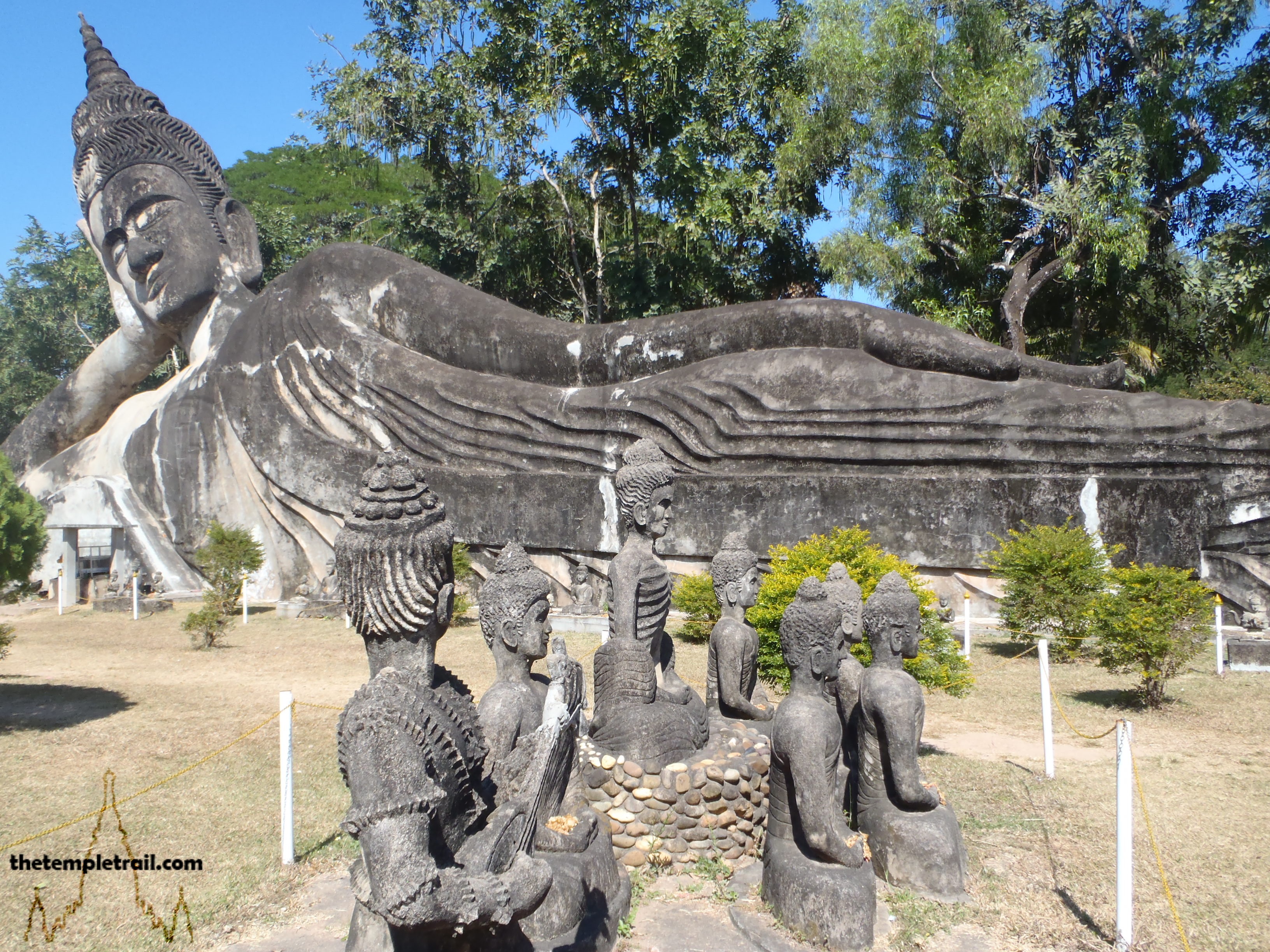 Xieng Khuan
Xieng Khuan
[…] https://thetempletrail.com/yeh-pulu/ […]